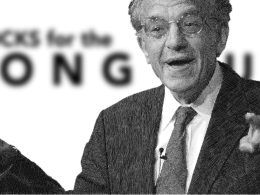For years, passive investing has been the go-to strategy for investors chasing low fees and broad exposure to the market. But what if the very thing that made it so appealing is now quietly reshaping markets in dangerous ways?
In their eye-opening research paper, “Passive Aggressive: The Risks of Passive Investing Dominance,”1 Chris Brightman and Campbell Harvey from Research Affiliates get right to the point: passive investing has become too powerful, too mechanical—and too indifferent to the fundamentals that markets are supposed to care about.
“Passive products are indifferent to fundamental information, including sales growth, expected earnings, innovation activities, or competitive position within an industry. They allocate based solely upon market price and recent momentum.”
Let’s unpack what that means.
Passive’s Popularity Isn’t Without Consequences
In 2024, passive strategies officially overtook active management, attracting nearly $2 trillion in ETF flows. But that’s just the beginning. As Brightman and Harvey point out, the real share of passive investing is likely even higher due to “closet indexing” by large institutions. The appeal? Most active managers lag their benchmarks, and passive funds are dirt cheap to own.
Still, that tidal wave of money into cap-weighted index funds is creating problems. Big ones.
“Flows into passive strategies cause unrelated stocks to move synchronously, undermining diversification and potentially increasing systemic risk.”
In simple terms: when everyone buys the same basket of stocks, those stocks start moving together—regardless of how different they are fundamentally. That’s not diversification. That’s groupthink.
Momentum on Autopilot
Cap-weighted indices don’t care why a stock goes up or down—they just care that it did. The more a stock rises, the more it gets bought. That creates what the authors call “mechanical momentum,” where flows chase performance and push valuations even further off course.
“These passive strategies invest their persistent inflows more into stocks whose prices have gone up and less into stocks whose prices have gone down, reinforcing price momentum and diluting security-specific price discovery.”
Meanwhile, active managers—those still willing to bet against the herd—are being drowned out. Figure 4 from the paper shows that active portfolios lean contrarian, while passive ones follow the trend. And as passive keeps winning the popularity contest, markets lose their ability to correct excesses.
We’re Losing Price Discovery
Here’s the scary part: when no one’s paying attention to fundamentals, the market loses its compass. Brightman and Harvey warn that we may be flying blind.
“The essential function of price discovery—necessary for market efficiency—relies on active investors, who trade based on fundamentals.”
But when those investors are sidelined, prices are driven not by business prospects, but by fund flows. That’s a recipe for bubbles. And it’s happened before—just ask anyone who lived through the dot-com crash.
“Cap-weighted indices overweighted inflated tech stocks, devastating returns when the bubble burst.”
Fragility in Plain Sight
Brightman and Harvey take the argument further: passive investing may actually amplify market risk.
When redemptions hit, passive funds can trigger a cascade. Why? Because so many funds now hold the same names. And in those moments of panic—when everyone wants out—there’s no clear buyer on the other side.
“Large institutions and firms themselves systematically avoid buying when index funds are selling.”
This synchronization doesn’t just raise volatility—it threatens liquidity and stability. A system designed for safety might just become its weakest link.
A Case for Rebalancing (and Re-Thinking)
So what’s the answer? The authors offer a surprisingly grounded one: go back to rebalancing. Not in the timing-the-market sense—but in the disciplined, fundamentals-first way that trims expensive stocks and adds to cheap ones.
“This approach is not tactical market timing; it is contrarian rebalancing.”
And history backs them up. From 1995 to 2005, equal-weighted and fundamentally weighted indices outperformed their cap-weighted counterparts. Why? Because they didn’t blindly follow the herd.
“Non-cap-weighted indices sever the direct linkage of market prices to portfolio weights… curtail exposure to overpriced securities and boost stakes in undervalued ones.”
Final Thought: Discipline Pays When the Market Doesn’t
Despite all these risks, Brightman and Harvey see a silver lining. In distorted markets, disciplined strategies have more room to shine. That’s the opportunity.
“When prices are pushed away from fundamentals by non-economic flows, they tend to mean-revert, often abruptly. Strategies that systematically rebalance toward fundamental anchors are built to harvest this return potential.”
In other words, the chaos passive investing creates might just be the thing that makes fundamental strategies relevant again.
As Brightman and Harvey put it: “The more distorted the market, the greater the potential rewards from rebalancing.” It’s a warning—and an invitation.
Footnotes:
1 Brightman, Chris and Campbell R. Harvey. "Passive Aggressive: The Risks of Passive Investing Dominance." 19 May 2025 ↩︎
Copyright © AdvisorAnalyst














